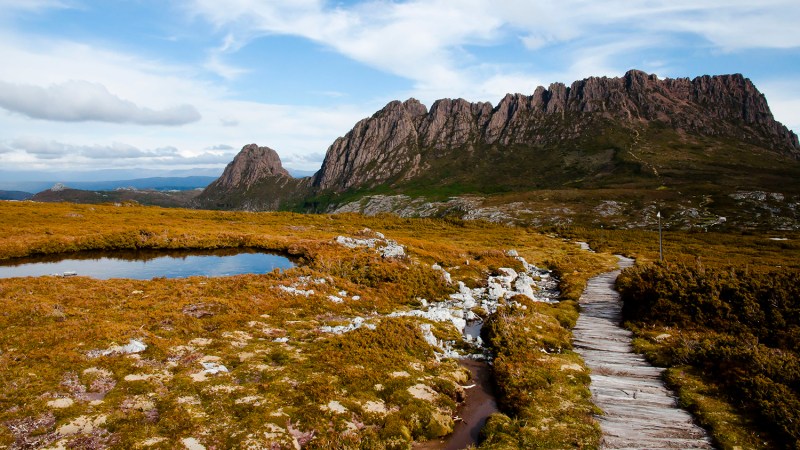
For Coastal Lovers: Cape to Cape Walk (Western Australia)

What it lacks in length (it’s “only” 84 miles long), the Cape to Cape Walk more than makes up for in stunning scenery. This relatively moderate trek follows a high coastal ridgeline along the southwestern corner of Western Australia along the Margaret River between lighthouses at Cape Leeuwin in the south and Cape Naturaliste in the north. Outfitted hikers with some experience can readily make the journey on their own. Alternatively, there are plenty of guided tour options with companies like Inspiration Outdoors. Guided hikers need only carry a daypack, as overnight accommodations and transportation are provided to keep their load light.
Best time to go: Mid-September through mid-October, when the wildflowers are in peak bloom.
For Hardcore Thru-hikers: Te Araroa Trail (New Zealand)

Among the world’s greatest thru-hikes — namely in the U.S. and Canada — this New Zealand monster ranks among the most epic. For nearly 2,000 miles, hikers can taste every variety of the country’s landscape including dense jungle bushwhacking, towering alpine ridges, and beautiful sandy beaches. The Te Araroa is Maori for “the long pathway,” and it more than earns its name. It’s divided into 160 tracks and most hikers need more than five months to complete an end-to-end hike. It starts on the North Island’s tip at Cape Reinga. From there, it crosses directly through the core of New Zealand, including the Queen Charlotte Track, the rich Maori culture of Whanganui National Park, the surreal Takitimu Forest, and the still-active Tongariro volcano.
Best time to go: October through April.
For Wildlife Trackers: Overland Track (Tasmania, Australia)

To put this trail in perspective: Tasmania is home to some of the world’s most ruggedly beautiful terrain, and the Overland Track traverses some of the most ruggedly beautiful landscape in Tasmania. Don’t let the modest 40- to 50-mile length (the actual distance depends on where you finish) fool you — a bold red warning on the parks service’s own website describes it as “a serious undertaking.” The journey takes hikers through the remote Cradle Mountain-Lake St. Clair National Park, where the diverse landscape includes alpine lakes, eucalyptus groves, rainforest, and pristine valleys — providing plenty of opportunities for solitude. Notable highlights include Mount Ossa (the 5,305-foot peak is the highest in Tasmania) and exploring Lake St. Clair (the deepest in Australia). The entire area is also a haven for indigenous wildlife including platypus, wombats, and, of course, Tasmanian devils.
Best time to go: October 1 through May 31 is peak season. During this time, hikers are required by Tasmania Parks and Wildlife to reserve their trip and hike north to south (specifically Cradle Mountain to Lake St. Clair). Otherwise, the trail is technically open during the winter, assuming you’re hardcore enough to tackle it.
For Spelunkers: Six Foot Track (New South Wales, Australia)

The Six Foot Track is a historic bridle path that’s among the most iconic hiking trails in eastern Australia. The 27-mile long route connects Katoomba with Jenolan Caves in the Blue Mountains of New South Wales. From the Explorers’ Tree, hikers will need approximately three days and two nights to complete the journey. The route quickly drops down into the Megalong Valley before crossing the Bowtells Swing Suspension Bridge over Coxs River. Nearing the end, hikers follow the Black Range ridge before ending the hike in the caves. Experienced independent hikers can find useful trail details at Wild Walks. For a more relaxed, guided approach, check out the Six Foot Track Walk with life’s an adventure.
Best time to go: The shoulder seasons of autumn (March through May) or spring (September through November) bring the best weather. In the summer (December through February), the area can prove dangerously hot during the day; winter (June through August) is surprisingly cold, with some areas seeing occasional snow.


